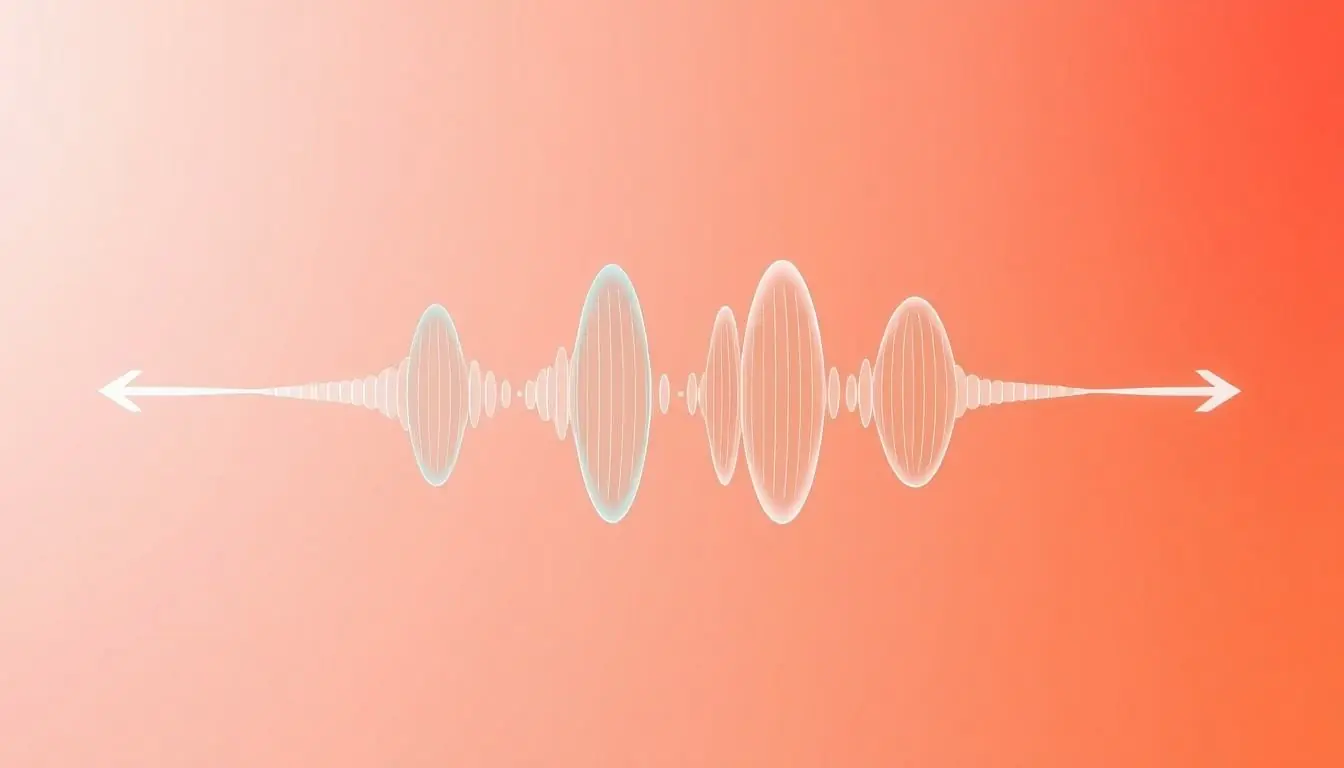Ever wondered how your favorite tunes reach your ears while you’re stuck in traffic? It’s not magic; it’s science! Sound travels through air in ways that might just blow your mind—pun intended. When an object vibrates, it creates pressure waves in the air, and those waves are what your ears interpret as sound.
Table of Contents
ToggleUnderstanding Sound Waves
Sound waves consist of vibrations that travel through air by creating pressure variations. These waves can be characterized in several fundamental ways.
Definition of Sound Waves
Sound waves are mechanical vibrations that propagate through a medium, such as air. They occur when an object vibrates, causing nearby particles to shift. These particle movements generate compressions and rarefactions that transmit energy in wave form. Our ears detect these pressure changes, translating them into sounds that we recognize.
Types of Sound Waves
Two primary types of sound waves exist: longitudinal and transverse. Longitudinal waves feature particle movement parallel to wave direction, exemplified by how sound travels through air. Compression occurs as particles move closer together, followed by rarefaction as they spread apart. Transverse waves, less common in air, occur when particles oscillate perpendicular to wave direction. Both types contribute to the understanding of sound in various environments, though only longitudinal waves typically travel through gases.
The Process of Sound Transmission


Sound transmission occurs through a series of vibrations and pressure changes in the air. Understanding these components clarifies how sound reaches the ears.
Vibration and Pressure Changes
Vibrating objects create sound waves by causing neighboring air molecules to compress and expand. Compressions occur when air molecules are pushed together, resulting in areas of high pressure. Rarefactions follow, creating areas of low pressure as the molecules spread apart. These variations in pressure propagate outward from the source, transmitting energy through the air. The human ear detects these changes, allowing for the perception of sound. As sound travels, it influences the intensity and frequency of the vibrations, determining its pitch and volume.
Medium’s Role in Sound Travel
Air serves as the primary medium for sound transmission, allowing waves to propagate effectively. The density and temperature of the air influence how sound travels. Warm air, being less dense, enables sound to carry farther compared to cold air. Additionally, sound requires a medium; it cannot travel through a vacuum. Different media, like water and solids, transmit sound more efficiently due to closer particle proximity, altering the speed at which sound waves travel. The specific characteristics of a medium profoundly impact sound quality and clarity.
Factors Affecting Sound Travel
Sound travel is influenced by several key factors. Understanding how these elements work together enhances comprehension of sound propagation in air.
Temperature and Humidity
Temperature significantly impacts sound speed. Warmer air allows sound waves to travel faster because increased temperature elevates molecular activity. Sounds travel at approximately 331.5 meters per second at 0°C, increasing by about 0.6 meters per second for each degree Celsius rise. Humidity also plays a role; higher humidity levels lower air density, enabling sound waves to travel more efficiently. When the air contains more moisture, sound waves transmit with greater ease, resulting in clearer audio at distances.
Density of the Medium
Medium density greatly affects sound transmission efficiency. Air density dictates how closely particles are packed together, influencing how quickly sound waves propagate. Denser mediums, like liquids and solids, transmit sound more effectively than gases due to particle proximity. The increased particle interaction in these mediums facilitates quicker energy transfer, enhancing sound quality and clarity. In air, lower density means slower sound travel compared to more compact mediums. Thus, both density and medium type dictate sound travel dynamics significantly.
Real-World Applications
Sound travels through air in ways that impact everyday life and technology. Understanding sound’s behavior proves essential in various contexts.
Everyday Examples of Sound Travel
Sounds from conversations, music, and nature illustrate everyday sound travel. People experience speech when air vibrations caused by vocal cords create compressions and rarefactions. Music emits various frequencies, enabling enjoyment at concerts or through headphones. Thunder serves as another example, where the rapid displacement of air molecules transmits energy over distances. City sounds, from sirens to chatter, showcase how sound waves propagate in busy environments. Enhanced understanding aids in optimizing acoustic designs in venues like theaters or lecture halls.
Implications in Technology
Technology relies on sound principles for advancements. Innovations in audio equipment, such as speakers and headphones, utilize sound wave mechanics for superior performance. Medical ultrasound employs sound waves to generate images of internal structures, assisting professionals in diagnostics. Noise-canceling headphones employ sound interference, reducing unwanted noises significantly. Additionally, sonar technology uses sound propagation to locate objects underwater, crucial for navigation and exploration. Each application highlights sound’s pivotal roles across multiple sectors, emphasizing ongoing significance in enhancing human experiences.
